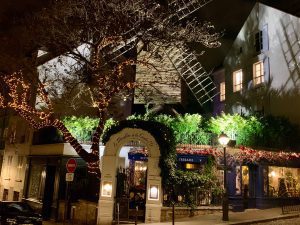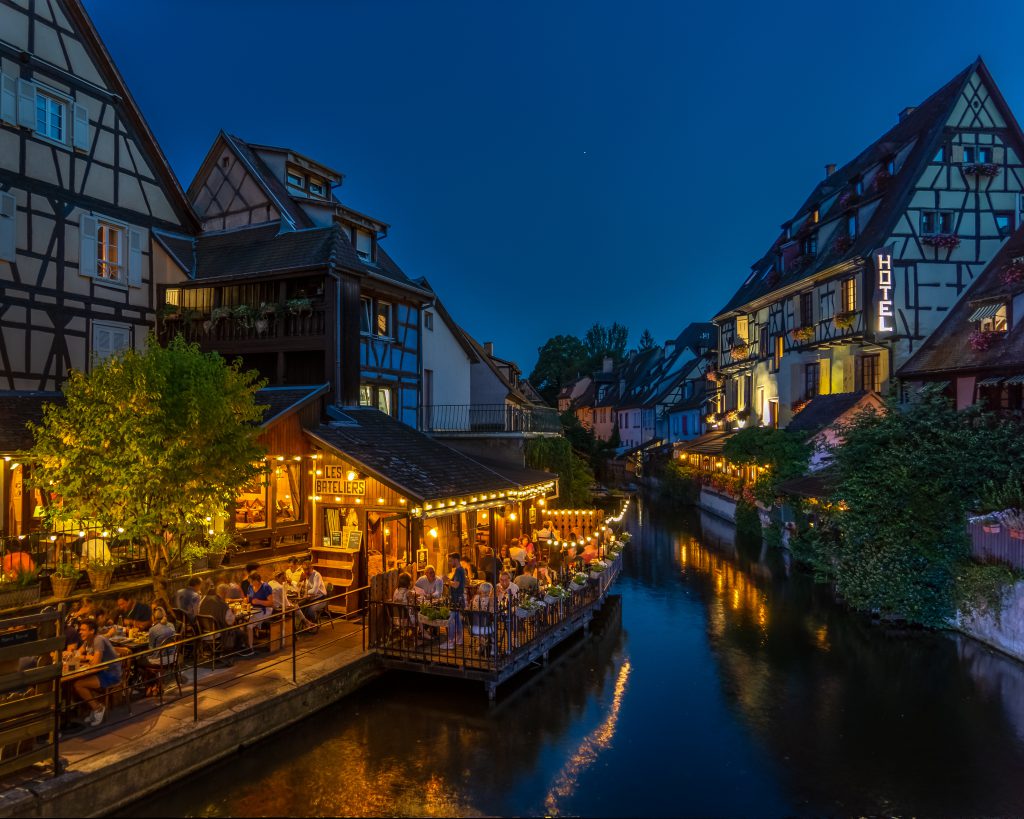The idiom, “Everything old is new again,” continues to ring true, and the food industry’s drastic changes have reminded world travelers of the simple joys and the sanitary benefits of dining al fresco. Al fresco literally means ‘in the cool air’ in Italian; however, it has grown in modern language to refer to any type of outdoor dining.
The Sights and Sounds of Al Fresco Dining
Imagine exploring Europe’s old-world charm by taking in the busy streets while dining al fresco in a modern-day restaurant. Secret retreats embedded on sidewalks, rooftops, terraces, and beyond create memorable experiences for anyone who chooses to feast. Umbrellas and candlelit tables come nightfall makes dining so much more than just eating, but about comfort, family, and spending time with the ones you love.
At the renowned Le Moulin de la Galette restaurant in Paris, one may wish to indulge in vanilla crème brûlée for dessert after consuming homegrown vegetables and tender sirloin steak. Requesting assistance from the restaurant’s sommelier is the best way to ensure that you choose the right wine for your meal, and the perfect method to utilize in expanding your wine expertise.

Next we travel to Greece!
Mediterranean cuisine, acknowledged by many to be one of the healthiest diets in the world, is a beautiful way to enjoy an ocean-front respite. Easily drinkable, locally bottled wines from nearby vineyards–unshackled from sulfites and preservatives flow freely. To dine indoors in Greece or on a Greek island would be tragic. When ordering food in Europe, you can rest assured they will prepare cuisine with the finest and freshest ingredients.
The History of Dining in Open Air
The history of outdoor dining dates back to medieval times. Cooked meats and pastries, served outside, would be consumed before a hunt. In the 18th century, Americans created pleasure gardens. These private spaces were created for families to take a stroll, play outdoor games, and enjoy a small outdoor meal. In Germany, outdoor dining originated in the 19th century in Munich and was referred to as Biergarten. Biergartens were massive underground cellars next to the River Isar that was dug by Bavarian breweries designed to keep beer cold. Biergartens were relied upon to supply beer for guests to enjoy along with cold meats, local food, and games in a shaded outdoor setting, which more closely relates to how we think of beer gardens today.
The first English tea garden was established in 1837 at Chabua in Upper Assam, India. Tea gardens and pleasure gardens also began to bloom all over England. There were over 200 tea and pleasure gardens, and tea gardens were available to visit within a short commute from London from the 16th through the 19th centuries. They were primarily frequented from those who lived in the city and located in the more ‘pleasant’ areas of London’s suburbs, hence the name pleasure garden.
The Return to Simplicity
As the world continues to emerge from the coronavirus pandemic, new, sensible, and creative travel options have appeared, just as they have throughout history. If you are planning your next European adventure, make sure to visit famous eateries and al fresco dining that will give your tastebuds an experience of a lifetime.
—
About the Writer:


Meet Alicia Dale! World traveler, adventurer, lover of food, and writer of nonfiction and business books. Find out more about, Alicia at www.ExploreDineTravel.com.
Twitter: @LoverofFood200
Instagram: @LoverofFood200
Facebook: AliciaDaleWriter
